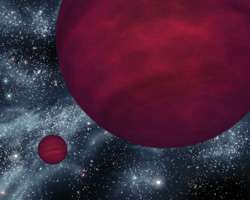More on brown dwarfs and other astrophysical objects

EU researchers made significant advances in characterizing the elemental compositions of stars, planets and interstellar media.
Atomic spectroscopy relies on the fact that every element in the universe has a unique ‘fingerprint’ based on its electrons and their energy levels in order to determine the elemental composition of substances from drugs or pollutants to the atmosphere of stars.
Various types of atomic spectroscopy exist, all based on measurement of electron transitions in energy levels caused either by absorption of energy during excitation or emission during decay to ground state.
Infrared (IR) astrophysical spectroscopy has received a boost in recent years from new ground-based and satellite-borne telescopes equipped with medium to high resolution IR spectrometers.
However, observed stellar and sub-stellar spectra could not be adequately analysed due to lack of an extensive database of non-terrestrial abundant atomic species and molecules. Imagine trying to decode a secret message without knowledge of the code used to encrypt it.
European researchers supported by funding of the LAB Astrophysics project sought to enhance characterisation of subsolar objects (SSOs) that present specific difficulties related to spectral measurements and analysis.
SSOs such as ultra cool dwarfs and brown dwarfs have relatively low temperatures and complex atmospheres. Their low temperature environments do not have enough thermal energy to excite relatively higher energy levels so their spectra are dominated by harder-to-measure IR transitions from low-lying upper energy levels.
LAB Astrophysics investigators successfully determined radiative lifetimes of neutral calcium, manganese, chromium and yttrium and supplemented the information with determination of the related transition strengths (oscillator strengths).Using the newfound oscillator strengths the researchers identified key atomic transitions important in classification of the previously poorly understood atmospheric components of cool stellar and substellar objects.
LAB Astrophysics project outcomes significantly advanced classification of complex IR astrophysical spectra. Innovations should enable detailed characterisation of the elemental compositions of dust-obscured objects including centres of galaxies, interstellar media and cool objects such as brown dwarfs and extra-solar planets.
Provided by CORDIS


















